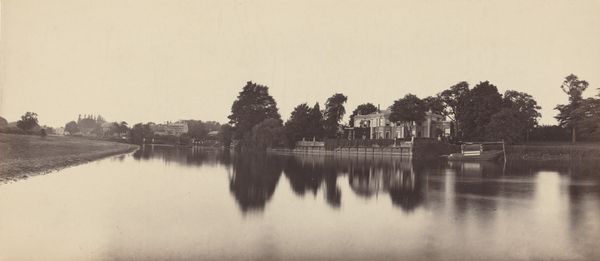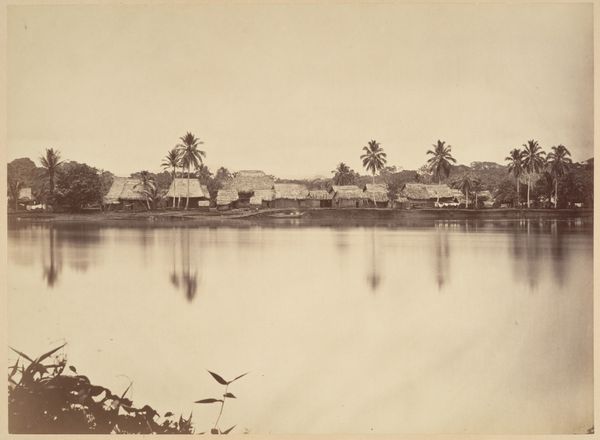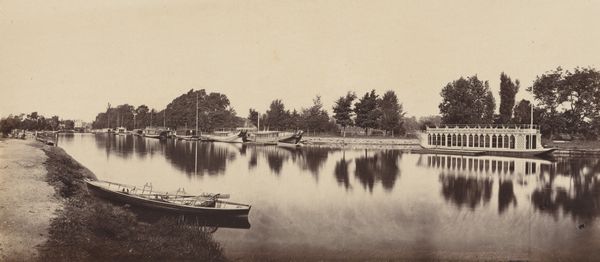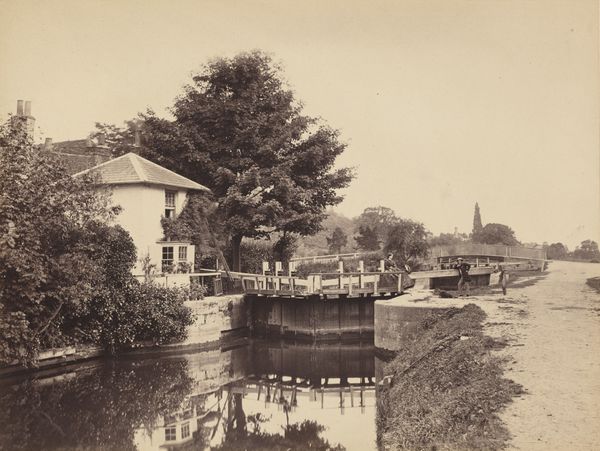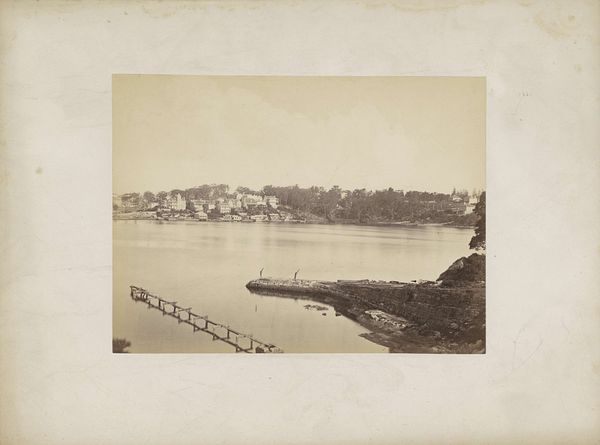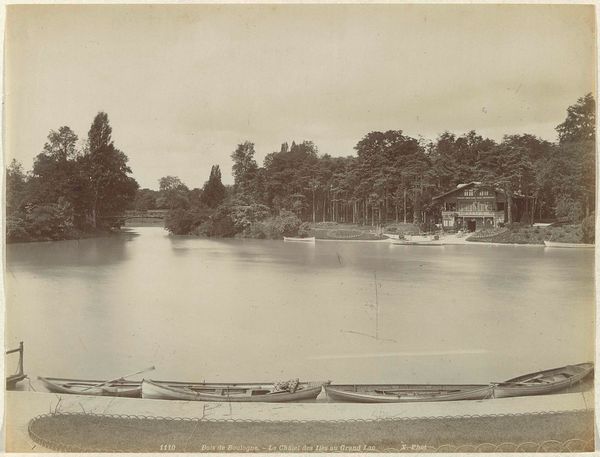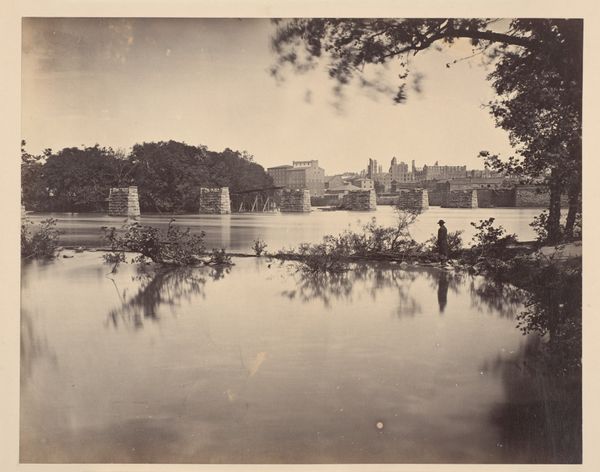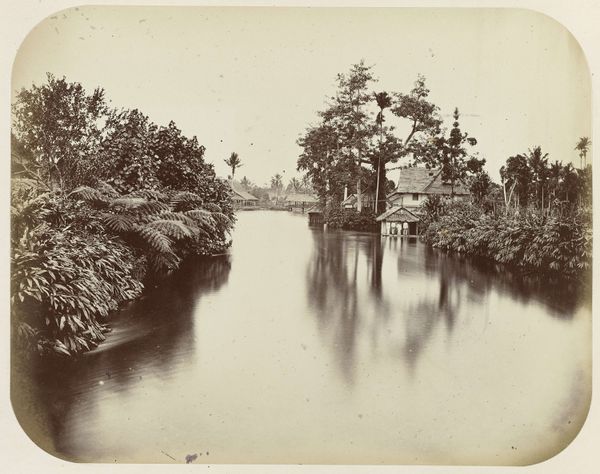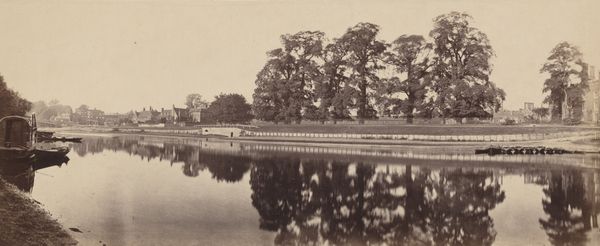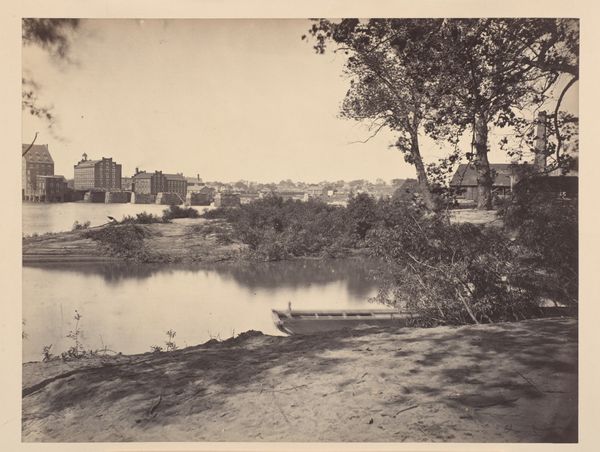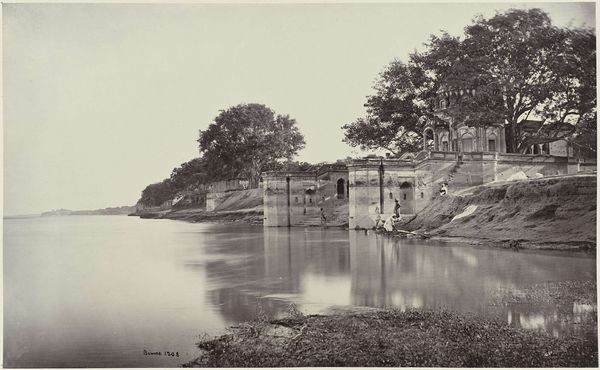
print, photography, albumen-print
# print
#
landscape
#
outdoor photography
#
photography
#
orientalism
#
albumen-print
Dimensions: Image: 7 7/8 × 11 1/8 in. (20 × 28.3 cm)
Copyright: Public Domain
Curator: Standing here, the immediate stillness in this 1869 albumen print by John Thomson— "Ming-Ming Customhouse, Rieng-Gang City"— just grabs me. You feel the heat shimmering off the water, right? Editor: Yes, there is an undeniable serenity to the composition. Note how Thomson uses the reflective river surface to essentially double the architectural forms. This mirroring creates an almost perfect symmetry and amplifies the weight of the built environment. Curator: "Weight" is a great word. Even though it's a sepia-toned photograph, it feels almost… tactile? The building itself is quite imposing with a modest, human scale that brings to mind all the coming and going from the ports and seas. The Customhouse had something, eh? Editor: Exactly, its geometry is rigidly defined. Note the horizontality: the strong emphasis of the building aligns in the distance—opposed against the natural undulation of that wild vegetation around it. Curator: Do you suppose he chose this specific angle to frame how culture meets wilderness? The trees almost seem like they're breathing down its neck. The photo asks all kind of intriguing things. Like: what goods moved through this place and from where, or whose hands were counting those goods, perhaps? What lives were regulated by it, maybe broken, or rebuilt? All because some line of value. Editor: An evocative point. What is revealed here isn’t only an empirical observation of architectural style, it's the dynamic between formal structure and cultural ecology as observed through material. See how the formal design becomes less of a subject in itself, and more of an actor operating inside all the structures here? Curator: What stays with me is not how we box and categorize what’s "art", or where; what captures us in history books— but that everything changes it as if through some shared glance with Thomson through the view of his camera, huh? Editor: Precisely. Through composition, form, and reflection we begin to recognize that these captured monuments function as testaments. It also offers critical commentary for an understanding, on its lasting place.
Comments
No comments
Be the first to comment and join the conversation on the ultimate creative platform.
